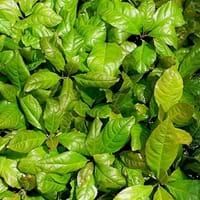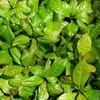Life Span
Perennial
Perennial
Type
Broadleaf Evergreen
Broadleaf Evergreen
Origin
China, Japan
China, Japan
Types
Not Available
Not Available
Habitat
Not Available
Not Available
USDA Hardiness Zone
7-9
7-9
AHS Heat Zone
Not Available
Not Available
Sunset Zone
Not Available
Not Available
Habit
Thicket/Colonizing
Thicket/Colonizing
Flower Color
Light Pink
Light Pink
Flower Color Modifier
Not Available
Not Available
Leaf Color in Spring
Dark Green
Dark Green
Leaf Color in Summer
Dark Green
Dark Green
Leaf Color in Fall
Dark Green
Dark Green
Leaf Color in Winter
Dark Green
Dark Green
Leaf Shape
Alternate
Alternate
Plant Season
Spring, Summer, Fall, Winter
Spring, Summer, Fall, Winter
Sunlight
Partial shade, Full Shade
Partial shade, Full Shade
Growth Rate
Medium
Medium
The pH of Soil
Acidic
Acidic
Soil Drainage
Well drained
Well drained
Tolerances
Not Available
Not Available
Where to Plant?
Container, Ground
Container, Ground
How to Plant?
By dividing rhizomes, tubers, Seedlings, Semi-hardwood cuttings
By dividing rhizomes, tubers, Seedlings, Semi-hardwood cuttings
Plant Maintenance
Medium
Medium
Watering Requirements
Average Water Needs, Do Not over Water
Average Water Needs, Do Not over Water
In Summer
Average Water
Average Water
In Spring
Less Watering
Less Watering
In Winter
Moderate
Moderate
Soil Drainage Capacity
Well drained
Well drained
Sun Exposure
Partial shade, Full Shade
Partial shade, Full Shade
Pruning
Prune after harvesting
Prune after harvesting
Fertilizers
All-Purpose Liquid Fertilizer
All-Purpose Liquid Fertilizer
Pests and Diseases
Not Available
Not Available
Plant Tolerance
Not Available
Not Available
Flowers
Insignificant
Insignificant
Flower Petal Number
Single
Single
Foliage Texture
Medium
Medium
Foliage Sheen
Glossy
Glossy
Attracts
Not Available
Not Available
Allergy
Not Available
Not Available
Aesthetic Uses
Ground Cover, Showy Purposes
Ground Cover, Showy Purposes
Beauty Benefits
Not Available
Not Available
Environmental Uses
Provides ground cover
Provides ground cover
Medicinal Uses
Not Available
Not Available
Part of Plant Used
Flowers, Fruits
Flowers, Fruits
Other Uses
Not Available
Not Available
Used As Indoor Plant
No
No
Used As Outdoor Plant
Yes
Yes
Garden Design
Container, Edging, Foundation, Groundcover, Mixed Border, Rock Garden, Wall
Container, Edging, Foundation, Groundcover, Mixed Border, Rock Garden, Wall
Botanical Name
ARDISIA japonica
ARDISIA japonica
Common Name
Japanese Ardisia, Marlberry
Japanese Ardisia, Marlberry
In Hindi
Japanese Ardisia
Japanese Ardisia
In German
Japanese Ardisia
Japanese Ardisia
In French
Japanese Ardisia
Japanese Ardisia
In Spanish
Ardisia japonica
Ardisia japonica
In Greek
Japanese Ardisia
Japanese Ardisia
In Portuguese
Japanese Ardisia
Japanese Ardisia
In Polish
Japanese Ardisia
Japanese Ardisia
In Latin
Japanese Ardisia
Japanese Ardisia
Phylum
Magnoliophyta
Magnoliophyta
Class
Magnoliopsida
Magnoliopsida
Family
Myrsinaceae
Myrsinaceae
Clade
Angiosperms, Asterids, Eudicots
Angiosperms, Asterids, Eudicots
Tribe
Not Available
Not Available
Subfamily
Not Available
Not Available
Number of Species
Not Available
Not Available
Properties of Japanese Ardisia and Japanese Ardisia
Wondering what are the properties of Japanese Ardisia and Japanese Ardisia? We provide you with everything About Japanese Ardisia and Japanese Ardisia. Japanese Ardisia doesn't have thorns and Japanese Ardisia doesn't have thorns. Also Japanese Ardisia does not have fragrant flowers. Japanese Ardisia has allergic reactions like Not Available and Japanese Ardisia has allergic reactions like Not Available. Compare all the properties and characteristics of these two plants. Find out which of these plant can be used as indoor plant. If you are interested to decorate your house and garden, find out aesthetic uses, compare them and select the plant which will beautify your surrounding. Along with beautification, try comparing medicinal and edible uses of Japanese Ardisia and Japanese Ardisia and you can choose the plant having best and most benefits.
Season and Care of Japanese Ardisia and Japanese Ardisia
Season and care of Japanese Ardisia and Japanese Ardisia is important to know. While considering everything about Japanese Ardisia and Japanese Ardisia Care, growing season is an essential factor. Japanese Ardisia season is Spring, Summer, Fall and Winter and Japanese Ardisia season is Spring, Summer, Fall and Winter. The type of soil for Japanese Ardisia is Loam and for Japanese Ardisia is Loam while the PH of soil for Japanese Ardisia is Acidic and for Japanese Ardisia is Acidic.
Japanese Ardisia and Japanese Ardisia Physical Information
Japanese Ardisia and Japanese Ardisia physical information is very important for comparison. Japanese Ardisia height is 30.45 cm and width 60.95 cm whereas Japanese Ardisia height is 30.45 cm and width 60.95 cm. The color specification of Japanese Ardisia and Japanese Ardisia are as follows:
Japanese Ardisia flower color: Light Pink
Japanese Ardisia leaf color: Dark Green
Japanese Ardisia flower color: Light Pink
- Japanese Ardisia leaf color: Dark Green
Care of Japanese Ardisia and Japanese Ardisia
Care of Japanese Ardisia and Japanese Ardisia include pruning, fertilizers, watering etc. Japanese Ardisia pruning is done Prune after harvesting and Japanese Ardisia pruning is done Prune after harvesting. In summer Japanese Ardisia needs Average Water and in winter, it needs Moderate. Whereas, in summer Japanese Ardisia needs Average Water and in winter, it needs Moderate.


